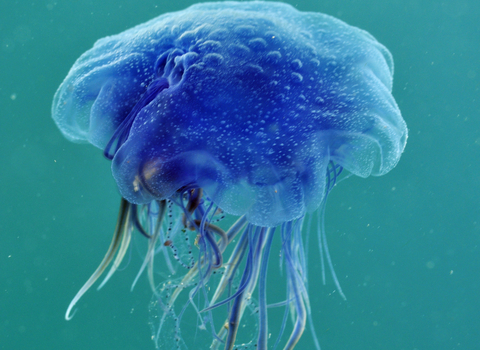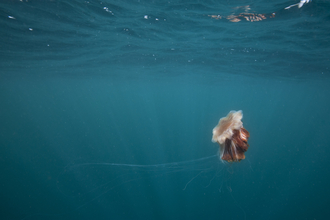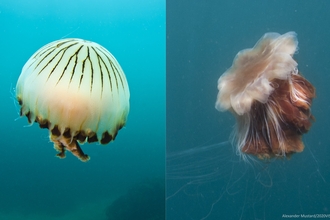
Blue jellyfish ©Linda Pitkin/2020VISION
Blue jellyfish
Often confused with the larger but similarly shaped lion’s mane jellyfish, the blue jellyfish can be colourless when young and develop a striking blue-purple bell as it matures.
Scientific name
Cyanea lamarckiiWhen to see
May to OctoberSpecies information
About
This beautiful jellyfish is often seen around the UK coastline in summer and autumn. They are attracted inshore by blooms of plankton that provide a plentiful supply of food. The blue jellyfish can drift along, easily capturing prey with its dense array of stinging tentacles.Like many of the jellyfish species, this animal does sting, so if you find one on the beach it's best not to handle it.





